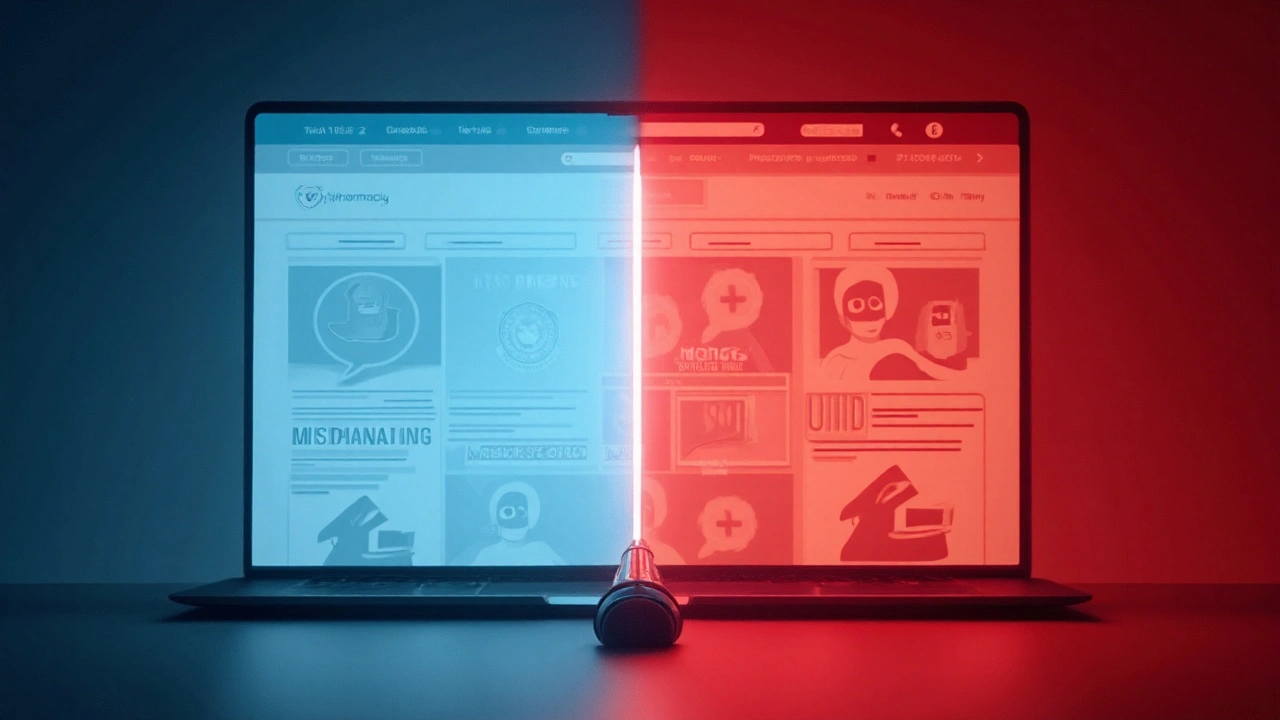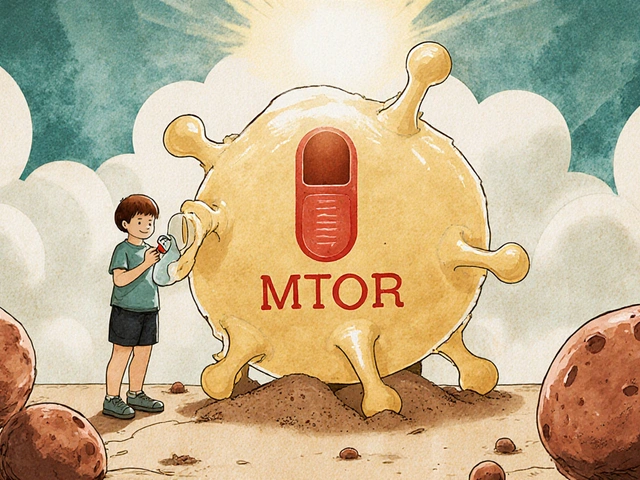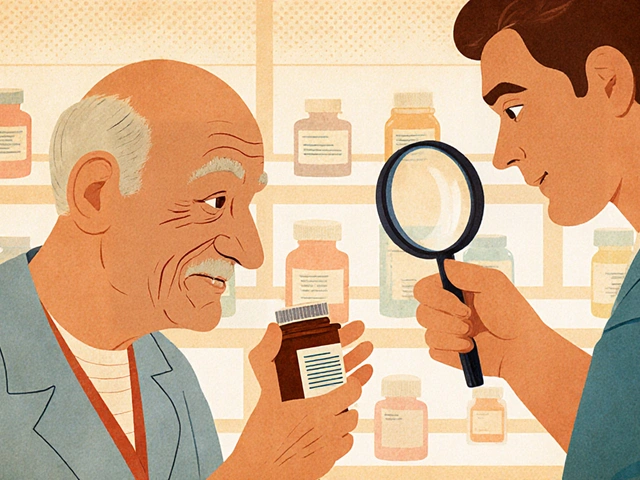Buy Generic Warfarin Online Cheap (2025): Safe U.S. Options, Prices, and What You’ll Need
You can pay under $4 for a month of generic warfarin at many U.S. pharmacies right now, but buying online still isn’t a free-for-all-you’ll need a valid prescription, and safety checks matter because this drug has a narrow dosing window. If your goal is to cut costs and not mess up your INR, here’s how to do it right in 2025: where to order, how to check a pharmacy’s legitimacy, what “cheap” actually looks like, and simple ways to avoid risky mistakes.
What to know before you buy generic warfarin online
Warfarin is a prescription anticoagulant used to prevent blood clots. It works, but it’s finicky. Small changes in dose, diet, or other drugs can push your INR out of range and increase bleeding or clotting risk. Because of that, you should only order it from a licensed pharmacy that verifies your prescription and offers pharmacist support.
Here’s the fast checklist of what you need before you click “Add to cart”:
- A valid U.S. prescription with the strength (mg), dose schedule, and quantity. If you’re new, your prescriber might write a starting plan and ask for frequent INR tests in the first weeks.
- Your current manufacturer if you’re already stable. Sticking with the same manufacturer helps keep levels consistent; if a pharmacy needs to switch, tell your clinic so they can recheck your INR.
- Your latest target INR range. Most indications use 2.0-3.0; certain mechanical heart valves use 2.5-3.5. Your clinic sets this, not the pharmacy.
- A refill buffer. Don’t wait until your last 3 pills. Standard shipping can take 3-5 days; plan a 7-10 day cushion.
Quick safety flags that should stop you from buying:
- The site offers warfarin without a prescription. In the U.S., that’s illegal and unsafe.
- No physical U.S. address, no state pharmacy license listed, or no way to reach a pharmacist.
- Deals that look “too cheap” compared to typical U.S. cash prices (think pennies per pill claims). Counterfeits happen.
Authoritative sources back this up. The FDA’s BeSafeRx initiative and the National Association of Boards of Pharmacy (NABP) both warn against no-prescription sites. Warfarin also carries an FDA boxed warning for major bleeding risk. If a site ducks these basics, walk away.
Bottom line: the best way to buy generic warfarin online is through a licensed U.S. pharmacy that requires your prescription and supports your care team’s monitoring plan.
Where to buy safely: how to verify an online pharmacy
Finding a legitimate pharmacy online isn’t hard if you know what to look for. Use this quick verification flow:
- Look for a verified domain/credential. NABP’s “.pharmacy” domain and listings, or LegitScript certification, are solid signs. If a site claims credentials, verify them on the issuer’s site (type the name into the NABP or LegitScript directory).
- Check licensing. A real pharmacy lists its state license number and the state where it’s licensed. You can confirm on that state’s Board of Pharmacy site.
- Require a prescription. Legit pharmacies either contact your prescriber or ask you to upload/transfer a prescription. No exceptions.
- Ask about manufacturer consistency. If you’re stable, ask the pharmacy to keep you on the same generic manufacturer. If they must change, alert your anticoagulation clinic.
- Confirm pharmacist access. There should be a phone number or chat where you can reach a pharmacist for dosing, interactions, or side effects questions.
- Check shipping and states served. Many online pharmacies don’t ship to every state. Make sure they serve your state and offer delivery timelines that fit your refill window.
Pro tips from the trenches:
- Stick with U.S.-based pharmacies for warfarin. Cross-border import sites complicate quality control and can run afoul of U.S. rules.
- Use your clinic’s preferred pharmacy if they have one. It streamlines refills and makes dose adjustments faster.
- Ask for a 90-day supply if your prescriber agrees. It often lowers per-pill cost and reduces shipping stress.
If you don’t have an active prescription, schedule telehealth or an in-person visit first. Warfarin isn’t the drug to start without supervision-initial dosing and follow-up labs matter.

Prices in 2025 and how to pay less
Good news: generic warfarin is one of the cheapest cardio drugs in the U.S. For many strengths, big-box and supermarket pharmacies still have cash prices in the single digits for 30 tablets. Online pharmacies are competitive, but “online” doesn’t always mean cheaper than your local store-shipping can cancel out savings.
Typical U.S. cash price ranges in 2025 (varies by strength, manufacturer, and state):
| Item | Typical Cash Price | With Common Coupon/Card | Notes |
|---|---|---|---|
| Warfarin 5 mg, 30 tablets | $4-$12 | $2-$8 | Often part of low-cost generic lists |
| Warfarin 5 mg, 90 tablets | $8-$25 | $6-$18 | 90-day supply usually lowers per-pill cost |
| Warfarin (any strength), mail delivery | +$0-$10 shipping | Often free with membership or minimum spend | Standard 3-5 business days |
| Brand Coumadin, 30 tablets | $150-$250 | Rare discounts | Most patients use generic |
Where do these numbers come from? Cash price scans and coupon aggregators across national chains, grocery pharmacies, and large online pharmacies checked in mid-2025. Your exact price depends on your zip code and manufacturer availability.
Ways to pay even less, without cutting corners:
- Ask for a 90-day prescription. You get price breaks, and fewer shipments reduce the chance of running out.
- Use a discount card or coupon if paying cash. Compare a few aggregators-they don’t always show the same prices. Show the best code to your chosen pharmacy before they ring you up.
- Check your insurance mail-order benefit. Many plans include $0 delivery and low copays for generics. If your plan forces a specific mail-order pharmacy, use it.
- Stay flexible on manufacturer if your clinic agrees. Some pharmacies price-match specific suppliers. If you must switch, plan an INR check.
- Auto-refill and auto-ship. You’ll avoid last-minute overnight fees.
If you need different tablet strengths to fine-tune dosing (like 1 mg and 5 mg together), ask your prescriber to write both strengths with clear directions. Sometimes two strengths cost about the same combined as a single strength, and it saves you from splitting tiny tablets.
About pill colors: Warfarin tablets are color-coded by strength within a manufacturer, but colors vary across manufacturers. Don’t rely on color alone-check the imprint and your bottle label every refill.
| Strength (mg) | Common Colors (vary by maker) | Typical Use |
|---|---|---|
| 1 mg | Pink/Peach | Fine-tuning, sensitive patients, bridging adjustments |
| 2 mg | Purple/Light Lavender | Small dose steps |
| 2.5 mg | Green | Common adjustment strength |
| 3 mg | Tan/Brown | Intermediate adjustments |
| 4 mg | Blue | Intermediate adjustments |
| 5 mg | Peach | Very common base dose |
| 6 mg | Teal | Less common |
| 7.5 mg | Yellow | Higher dose options |
| 10 mg | White | Occasional higher doses or loading plans |
Again, colors are not universal-always confirm the imprint and strength on the label.
Risks, interactions, and smart use
Warfarin’s bleeding risk isn’t theoretical. It’s why the FDA requires a boxed warning and why clinics track your INR. Buying safely is step one; using it wisely keeps you out of trouble.
Key safety rules you should actually use:
- Keep your INR in target. Most people aim for 2.0-3.0; certain mechanical valves aim for 2.5-3.5. Your clinic will tell you your target and test schedule.
- Stay consistent with vitamin K. You don’t have to avoid leafy greens-just keep your intake steady. Big swings in kale/spinach/broccoli intake can swing your INR.
- Know the interaction hotspots. Common culprits include antibiotics (like TMP-SMX, metronidazole), antifungals, amiodarone, many seizure meds, and herbal products like St. John’s wort and ginkgo. Alcohol binges can also raise bleeding risk.
- Tell every clinician you’re on warfarin. Dentists, urgent care, ER-everyone. Bring your dosing plan or a photo of your MAR (medication administration record) if you have one.
- Don’t double up doses if you forget. If you remember the same day, take it; if you remember the next day, skip the missed dose and resume. Then call your clinic for advice. This is the general rule many clinics use, but always defer to your clinic’s instructions.
- Watch for warning signs. Unusual bruising, nosebleeds that won’t stop, blood in urine/stool, coughing/vomiting blood, severe headache, falls or hits to the head-these warrant urgent care.
- Travel smart. Pack doses in original bottles, carry a copy of your prescription, and plan an INR check if you’ll be gone long enough to miss a scheduled lab.
Evidence to trust: The American College of Cardiology/American Heart Association (2023 AF guideline) and the American College of Chest Physicians (CHEST Antithrombotic Therapy guidelines) both emphasize INR control, interaction management, and consistent dosing. The FDA label underlines the bleeding risk and the need for monitoring.
What about switching brands or manufacturers? Generics are bioequivalent, but tiny differences can matter with warfarin. If your manufacturer changes, let your clinic know; they might recheck your INR within a week or two. This is standard practice in anticoagulation clinics.

Alternatives, FAQs, and next steps
Thinking about skipping warfarin for a “no-lab” option? Direct oral anticoagulants (DOACs) like apixaban, rivaroxaban, and dabigatran don’t need INR checks, but they usually cost more. For some people, they’re worth it; for others, the price gap is a deal-breaker.
Quick comparison snapshot for 2025 cash payers:
| Drug | Monitoring | Typical Monthly Cash Price | Best For | Notes |
|---|---|---|---|---|
| Warfarin (generic) | INR tests | $4-$25 | Price-sensitive patients, mechanical valves, some valve repairs | Diet/drug interactions; very cheap; reversible with vitamin K/PCC |
| Apixaban (Eliquis) | None routine | $450-$600 | AF stroke prevention, DVT/PE | Usually preferred DOAC in AF; andexanet alfa for reversal |
| Rivaroxaban (Xarelto) | None routine | $400-$550 | AF stroke prevention, DVT/PE | Once daily for many indications; andexanet alfa for reversal |
| Dabigatran (Pradaxa) | None routine | $350-$500 | AF stroke prevention, DVT/PE | Idarucizumab reversal; more GI side effects |
If you have a mechanical heart valve, guidelines still favor warfarin. If you don’t, your clinician might discuss a DOAC based on your condition, kidney function, bleeding risk, and cost or coverage.
Now, a tight FAQ with the questions I hear most often:
- Can I buy warfarin online without a prescription? No. In the U.S., warfarin is prescription-only. Sites that sell it without a script are unsafe and illegal.
- Is generic warfarin the same as Coumadin? It’s bioequivalent. Most patients do well on generic. Try to stay with the same manufacturer to keep your INR steady.
- How “cheap” is cheap? In many cities, $4-$12 for 30 tablets of 5 mg is common. Online delivery can be the same or slightly more after shipping. Coupons often shave a few dollars.
- Should I split tablets to save money? Only if your clinician approves and the tablet is scored. Warfarin tablets are small; accuracy suffers with uneven splits.
- What if my pharmacy switched brands and my pill looks different? Check the imprint against your label, then notify your clinic. They may plan an INR check within 1-2 weeks.
- Can I drink alcohol? Light, consistent intake is usually okay; binges raise bleeding risk. Clear it with your clinic and stay consistent.
- What if I’m out of refills? Call your prescriber or anticoagulation clinic right away. Many will send a short refill to prevent gaps while arranging labs.
Ready for the actual steps to order? Use this short action plan:
- Confirm your prescription is current and includes the correct strength(s) and quantity (ideally 90 days).
- Pick a licensed U.S. pharmacy (check NABP/LegitScript and state license, and confirm they ship to your state).
- Price-check with your insurance portal and one or two coupon tools. Factor shipping costs.
- Ask the pharmacy to keep your current manufacturer. If they can’t, tell your clinic you may need an INR check after the switch.
- Place the order with at least 7-10 days of medicine on hand. Choose auto-refill/auto-ship.
- When it arrives, verify strength, imprint, and instructions match your plan. Store at room temperature away from moisture.
- Add your next refill reminder to your calendar for 2-3 weeks before you’ll run out.
Ethical CTA: Use a licensed pharmacy that requires a valid prescription, lists its state license, and offers pharmacist counseling. If you don’t have an active prescription, book a quick telehealth or office visit first-warfarin needs monitoring, and that’s not a hoop to skip.
Troubleshooting by scenario:
- No prescription yet, but you need anticoagulation: Don’t buy online. Get seen by a clinician; initial dosing and INR timing should be set up before any order.
- Insurance forces a specific mail-order pharmacy: Use it for the lowest copay and free shipping. Ask for a vacation override if you’re traveling.
- Uninsured and need rock-bottom price: Compare two local chains and one big online pharmacy using coupons. Ask for a 90-day supply. Many end up under $10-$18 for 90 tablets.
- INR suddenly high after a refill: Stop guessing. Call your clinic. Report any brand/manufacturer change and new meds or diet shifts. Expect a dose hold or adjustment and a recheck.
- Last-minute refill and traveling tomorrow: Call your prescriber for a short emergency fill at a local store with same-day pickup; ship the 90-day later when you’re back.
Why trust these steps? They line up with FDA BeSafeRx safety guidance, NABP pharmacy standards, and clinical guidance from ACC/AHA and CHEST on warfarin management-adapted for real-world buying decisions in 2025.







4 Comments
Veronica Mayfair
September 8, 2025 at 20:10
💡 Look for the “.pharmacy” seal or a LegitScript badge before you click “add to cart”. It’s a quick way to weed out sketchy sites, and most legit U.S. stores will show it right on the homepage. Also, double‑check the state license number – you can usually find it in the footer or “About Us” page. If the pharmacy can’t give you a real phone number for a pharmacist, walk awey. 👍
Keep your prescription on hand, upload it, and you’re good to go!
Rahul Kr
September 16, 2025 at 07:20
If you can get a 90‑day supply, you’ll usually shave a few bucks off the per‑pill cost and cut down on shipping hassles. Most big‑box chains let you set up auto‑ship, so you never run out – just make sure you have a cushion of 7‑10 days in case a delivery is delayed. 👍 :-)
Anthony Coppedge
September 27, 2025 at 21:06
When ordering generic warfarin online, the first step is to verify that the pharmacy holds a current state license and is listed in the NABP .pharmacy directory. Navigate to the NABP website and enter the pharmacy’s name or domain; a match confirms legitimacy. Next, confirm that the site requires a valid prescription upload rather than offering a “no‑Rx needed” option, as the latter is illegal. Upload a clear, legible copy of your prescriber’s order that specifies strength, dosage frequency, and quantity, typically a 30‑ or 90‑day supply. After upload, the pharmacy should either contact your prescriber directly or provide a secure portal for the prescriber to confirm the order. Make sure the pharmacy lists a pharmacist‑accessible phone number or live chat, because you will need a professional to answer dosing or interaction questions. Check the shipping policy; ensure the carrier delivers to your state within a 3‑5 day window and that tracking is provided. If you are already stable on a particular generic manufacturer, request that the pharmacy maintain that brand to avoid inadvertent INR fluctuations. In the event the pharmacy must switch manufacturers, notify your anticoagulation clinic so they can schedule an INR check within one to two weeks. Consider using a discount card or coupon; apply it before checkout and verify that the final price reflects the discount, remembering that the cheapest advertised price may exclude shipping fees. When the package arrives, compare the imprint code on each tablet with the label on your prescription to confirm you received the correct strength and manufacturer. Store the medication at room temperature, away from moisture, and keep the original bottle to maintain the imprint information for future reference. Set a calendar reminder for a refill date that is at least 10 days before your current supply runs out, to maintain a safety buffer. If you ever notice bruising, prolonged bleeding, or an unexpected rise in INR, contact your clinic immediately rather than adjusting the dose on your own. Finally, keep a digital copy of your prescription and the pharmacy’s receipt in case you need to verify the transaction with your insurer or prescriber later.
Joshua Logronio
October 9, 2025 at 10:53
Hey, just a friendly heads‑up: some sites that look super cheap are actually run by overseas operations that can’t guarantee the warfarin’s purity. They often hide the fact that they’re not FDA‑registered, and the pills might contain fillers that mess up ur INR. If a deal sounds too good to be true (like pennies per tablet), it probably is. Stick with U.S. pharmacies that show a real address and a pharmacist you can actually talk to – it’s worth the extra few bucks. Stay safe! :)